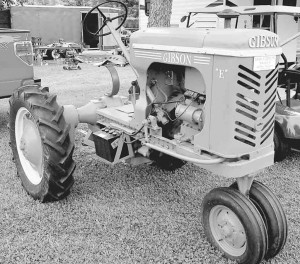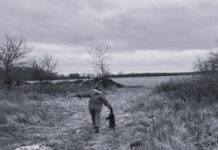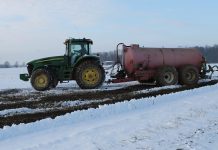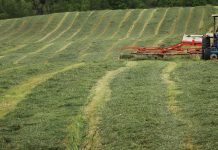A couple of weeks ago I spent a day at the Ashtabula County Antique Engine Club’s annual show at their grounds along U.S. Route 322, near the tiny community of Wayne. I usually try to make this excellent show and always see Gibson tractors on display, with several of them brought by Arlene and Lou Williams from New York.
In 1933, Harry Gibson started the Gibson Manufacturing Co. in Seattle, Washington, as a heavy machine shop. At the time, the Pacific Northwest was a hot bed of logging, and small, usually narrow-gauge logging railroads abounded in the area.
As their own rail line was the only way of accessing their remote logging areas for the transportation of men and supplies, these roads needed something larger than the 4 to 8 passenger speeders offered by Fairmont, F-M, and a few others, but not so large as a full-size passenger car pulled by a locomotive.
Gibson recognized this need and began making box-like cars on a motorized chassis with capacities for 10-100 men.
Engines used
I’ve been unable to find what make of engines Gibson used, or any technical details of these rail cars, but timber companies such as Pacific Northwest, West Fork, Rayonier, and others all ran Gibson rail speeders, which were advertised as “for loggers’ use and loggers’ abuse.”
As World War II wound down, that bugaboo of manufacturers at the time, unionization, was hounding the Seattle works, and Harry’s son, Wilbur (spelled Wilber in some accounts), who had apparently been experimenting with farm tractors and wanted to get closer to an agricultural market for such machines, went looking for a new location for a farm machinery factory.
Production plant
In 1944, the Gibsons decided on Longmont, a Colorado town some 30 miles north of Denver, for their new plant, which began production in 1946, with about 100 men on two eight-hour shifts.
The first 10 Gibson tractors built left the factory by truck on Feb., 28, 1946, bound for a dealer in nearby Denver. These first tractors were the model “A,” which was powered by a 6-horsepower Wisconsin air-cooled model AEH engine. The ‘A’ had 7.50 x 16 rear tires and 4.00 x 12 front tires, and had a three speed transmission and two independent rear wheel brakes.
Its wheelbase was 42-inches and it weighed 875 lbs. and came with a full range of implements. Under maximum load, fuel consumption was one and one-half quarts per hour. The location was a good one, right at the western edge of the fertile high plain that stretched eastward through Kansas.
New tractors
American farmers were starved for new tractors as the result of wartime scarcities, and Gibson’s tractor business, with son Wilbur as general manager, took off.
Within just a couple of years, a second plant building in Longmont was acquired and then another new one was built, and the manufacturing of plows, disc harrows and cultivators was expanded.
A contemporary newspaper account reads, “A tour of the Ninth and Third Avenue plants is most interesting if not amazing. Equipment is modern and the equal to any to be found anywhere. In a day’s time from 60 to 70 finished tractors come off the assembly line. The Gibson Manufacturing Company, with its payroll of 200 men, means much to the economic life of Longmont.”
The very similar Model “D” followed the “A” in 1948, with the main difference being 22-inch rear tires. Next was the Model “SD,” which weighed more than 1,000 pounds and had fenders, a hood and the distinctive chevron cut-out grill that all subsequent Gibson tractors wore.
All three of these first models were steered by a single hand lever — push the lever forward to turn left, and pull it back to go right. The addition of a real steering wheel was the prominent feature of the next model, the “Super D,” and optional hydraulics and electric starter and lights were then available.
The “Super D2” had a two-cylinder, 12-horsepower model TF Wisconsin air-cooled engine, weighed 1,375 pounds, and rolled on 7, 8 or 9.00 x 24 rears and 4.00 x 12 fronts. The Gibson series E tractors had the same 12-hp engine, tire sizes and other features as the “Super D2,” but was available as the Model “EF.”
A conventional four-wheeled configuration, the Model “E,” with a tricycle front end, the Model “EW,” wide-arch rear wheels and tricycle front, and the Model “EWF,” that had the wide-arch rear and the conventional wide front.
The series “E” were said to be capable of pulling two 10-inch plow bottoms “under normal soil conditions.” Also in 1948, Gibson introduced its “big boys,” the two-plow Model “H” and the 2-3-plow Model “I.”
The H power plant was the Hercules 4-cylinder IXB3 engine, while the I had a Hercules 6-cylinder QXD5. Both had four-speed transmissions, electricals and hydraulics as standard equipment, and a standard power take-off.
Rear tires were 10 X 38 on the H and 12 X 38 on the I, while fronts were 5.00 X 15 and 5.50 X 16 respectively. By the early 1950s, all the large tractor manufacturers had ramped up production and the postwar tractor shortage was easing.
Gibson was finding it difficult to compete with the likes of IHC, Deere and others and was also building forklifts for the U.S. Navy at the time. In 1952, the decision was made to halt tractor production at the Longmont plants and the Gibson firm was sold to Helene Curtis Industries, who folded it into the Fox Metal Co. in Denver.
For a while, Gibson parts were made at Fox and then the tractor business became another new company, Western American Industries, at Longmont. Western America turned out some 1,000 Gibson D’s, SD’s and Super SD’s, before closing sometime in 1958.
David Baas estimates that production of the A’s, D’s, and E’s was 50,000-60,000 total units, and probably less than 500 each of the H’s and I’s, making the latter two models pretty rare.














I have two complete model M Gibson tractors restoring for grandchildren. I am aware of another M owned by friend in Port Angeles washington. Another is reportedly residing in California. Do you have any knowledge of Model M total factory production?
I know there were around 537 of the M & I tractors produced, I worked at the plant 1950-52′ Sam L Jackson.
Where in Longmont were they produced? I’ve seen mention of 9th and 10th Avenue, but nothing more specific. I live in Longmont and would at least like to know where the buildings were/are.
You must of known Adam Lenhart he was my grandfathers brother Carl. I put up a lot of hay with an E, H, I!
I just inherited Gibson tractor- smaller one- I believe 1948, just checking it out for model ect… this was my grandpa- Pete Michaelsons tractor, it spent its entire life in Irondale Washington and Indian Island, I remember this cool old tractor through my entire childhood, It has a big wisconsin motor and all the implements, time to tune it up and get her rolling again- grandpa used to get in trouble because he was always putting the magneto in the oven to get it running- Grandma was not impressed, got to preserve history, may need help from old school tractor guys, not sure yet?
Mr. Gibson is my grand grandfather! Would love to find a restored one!